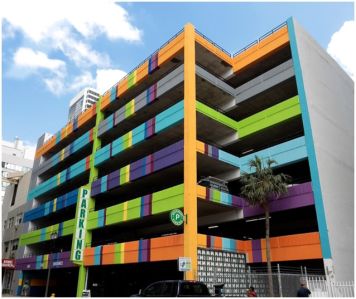Debt Ceiling Debate Puts Multifamily Owners in Tough Spot: JPMorgan
By Andrew Coen April 5, 2023 12:21 pm
reprints
The potential for a U.S. default if Congress can’t reach a deal to raise the federal debt ceiling by its summer deadline raises the stakes for multifamily property owners to proactively prepare for worst-case scenarios from an accelerated rising-rate environment, a new JPMorgan Chase (JPM) report stresses.
While it is likely congressional leaders and President Joe Biden will reach an agreement before the deadline, Al Brooks, head of commercial real estate for JPMorgan, said it is important for investors in the multifamily sector to avoid over-leveraging properties because a federal default would likely lead to further interest rate hikes in response to bondholder concerns. He suggests creating a “nice cushion” to assure being able to pay expenses, and to also consider switching to fixed-rate debt on loans coming due.
“I think it’s always smart to take risks you can take off the table,” Brooks said in the April 3 report. “If you’re coming up on a maturity and can make decent returns on your money, switching to a fixed-rate [loan] could be a smart thing to do.”
Even the threat of a U.S. default can pose serious economic risks — as evident in 2011 when Congress last ran up against the clock to raise the debt ceiling and borrowing costs rose by $1.3 billion that year. Debates around increasing the debt ceiling in 2011 also led to mortgage rates rising 0.7 to 0.8 percentage points for two months and caused the U.S. to lose its AAA rating from S&P Global Ratings.
The debt ceiling issue confronting the U.S. comes at a time when CRE is facing major headwinds from seven straight Federal Reserve interest rate increases to fight inflationary pressures. The Real Estate Roundtable issued a letter March 29 to congressional leaders emphasizing the importance of avoiding a U.S. default because of the damage it would cause to the CRE and housing sectors.
“Given the more than $10.3 trillion in mortgage debt backed by the federal government through Fannie Mae, Freddie Mac, Ginnie Mae and other federal agencies, the housing and real estate markets are particularly susceptible to any instability stemming from concern about the U.S. meeting its financial obligations,” the letter states. “The result could be permanently higher borrowing costs and a less stable flow of capital during future crises.”
The Fed’s hawkish interest rate strategy coupled with declining property valuations — especially with the office sector — prompted the Real Estate Roundtable to also issue a March 17 letter calling for financial services regulatory agencies to implement a program providing lenders with more flexibility to work with borrowers on “troubled” CRE debt restructurings.
Similar steps were taken by the federal government in 2009 during the Global Financial Crisis and in 2020 when the COVID-19 pandemic was at its height. An estimated $936 billion of CRE and multifamily debt is scheduled to mature over the next two years, according to the Real Estate Roundtable, citing Trepp data.
Andrew Coen can be reached at acoen@commercialobserver.com


